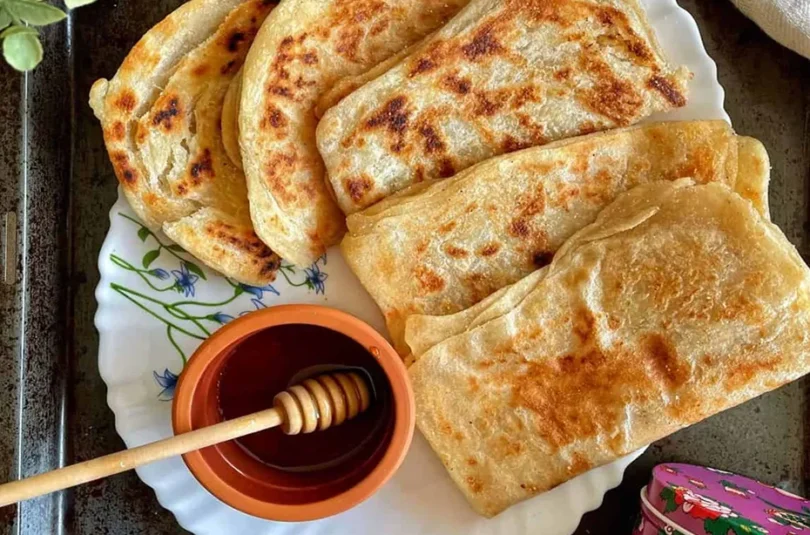Introduction – The Daily Ritual of Bread
Every morning in Morocco begins with the scent of bread. From narrow alleys in Fes to the wide boulevards of Casablanca, bakers pull fresh rounds from their ovens, steam rising into the dawn air. Vendors arrange stacks of msemen on metal trays, their edges crisp from the griddle. Somewhere nearby, a woman flips batbout on a hot plate, each puff of dough marking the start of another day.
Bread is not merely food in Morocco; it is presence. It punctuates meals, accompanies tea, and stands in for utensils. Whether eaten plain or used to scoop up tagine, it carries the same meaning: sharing.
Khobz – The Everyday Round
Khobz is Morocco’s most familiar loaf — thick, round, and slightly coarse. Almost every household makes it, often shaped by hand in the early morning and baked in a communal oven. Before sunrise, women send children to the ferran, the neighborhood bakery, where dozens of loaves bake together in deep brick ovens. Each family marks its dough with a pattern, ensuring no loaf is mistaken for another.
Khobz reflects both independence and interdependence. While every recipe varies slightly — more barley here, more semolina there — the baking itself remains collective. It’s a ritual of trust, a small system of community sustained by heat and patience.
Msemen – Layers of Craft
If khobz is the foundation, msemen is Morocco’s edible art. Square, layered, and rich with oil, it’s part pancake, part pastry. Street vendors stretch the dough on marble counters until it’s almost transparent, then fold it like origami and place it on a sizzling griddle. The surface blisters and turns golden, its layers separating just enough to trap flavor.
In the morning, msemen is drizzled with honey or dipped in olive oil. Later in the day, it transforms — stuffed with onions, spices, or minced meat — becoming a portable meal. The sound of msemen frying in the open air is as much a soundtrack of Moroccan cities as the call to prayer.
Batbout – The Pocket Bread of the Streets
Smaller and softer, batbout bridges the gap between bread and pita. Cooked on a flat griddle rather than in an oven, it puffs gently into a pocket ready to be filled. On the street, vendors slice it open to stuff with kefta, sardines, or omelette, adding harissa or tomato sauce for heat.
Its portability makes it the street’s perfect companion — eaten standing, walking, or shared among friends. Batbout captures the pace of modern Morocco: quick, resourceful, and endlessly adaptable.
The Communal Oven – Heart of the Neighborhood
Long before modern bakeries, Morocco’s ferrans were the center of neighborhood life. Even in large cities, they still operate as social crossroads. The baker knows every family, every mark pressed into each loaf. Conversations pass as quickly as the trays of dough.
Communal ovens run almost without pause — morning for bread, midday for stews in clay pots, evening for pastries. The rhythm is unchanged from centuries ago. In many ways, the ferran is Morocco’s oldest form of community kitchen, binding generations through shared fire.
From Past to Present – Bread as Heritage
Despite rapid urbanization, Morocco’s bread traditions remain intact. Supermarkets may sell packaged loaves, but few can rival the texture or warmth of street-baked bread. Younger bakers experiment with blends of grains and techniques, while rural families keep ancestral recipes alive.
In markets, bread bridges old and new. Msemen sellers accept mobile payments now, but they still stretch the same dough by hand. Khobz travels from stone ovens to social media feeds — a symbol of continuity in a changing nation.
Conclusion – The Hand That Breaks Bread
To share bread in Morocco is to share life. Each fold, bake, and bite speaks of patience and togetherness. On the street, bread is currency and comfort, eaten by everyone, everywhere.
Khobz, msemen, and batbout may differ in texture, but their meaning is the same — a link between hands, homes, and history. In every corner of Morocco, bread remains the one art practiced daily, sustaining both body and belonging.


Leave a Reply